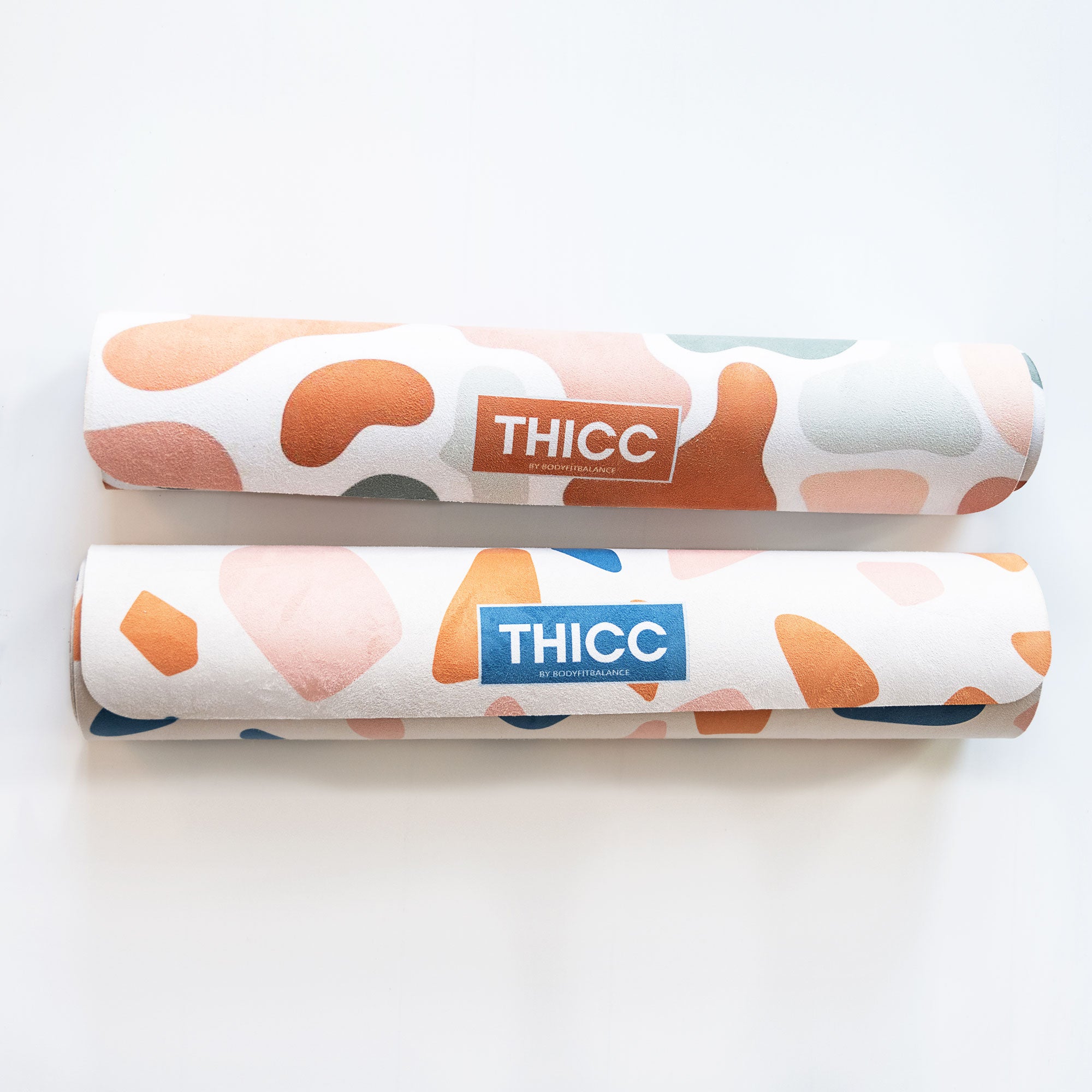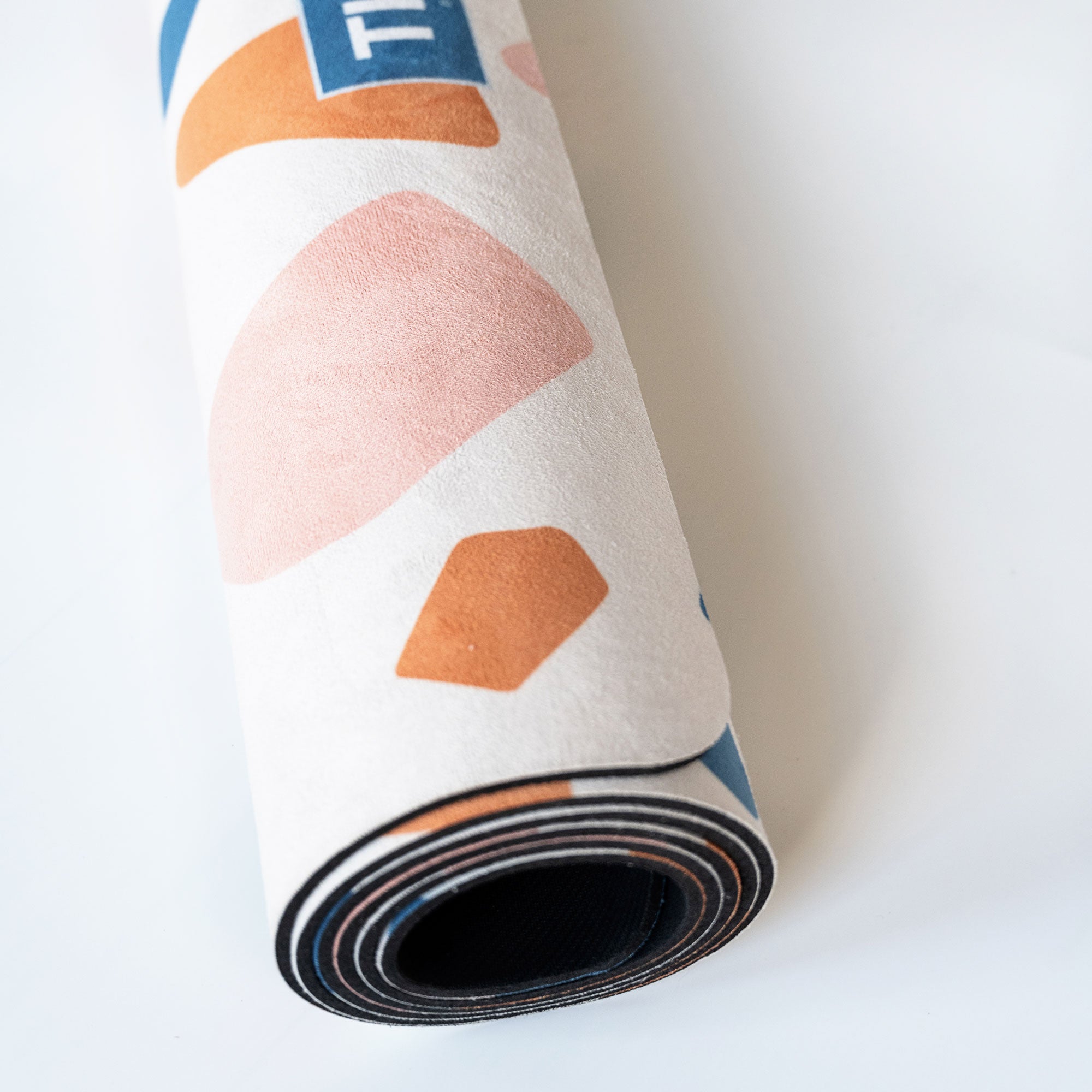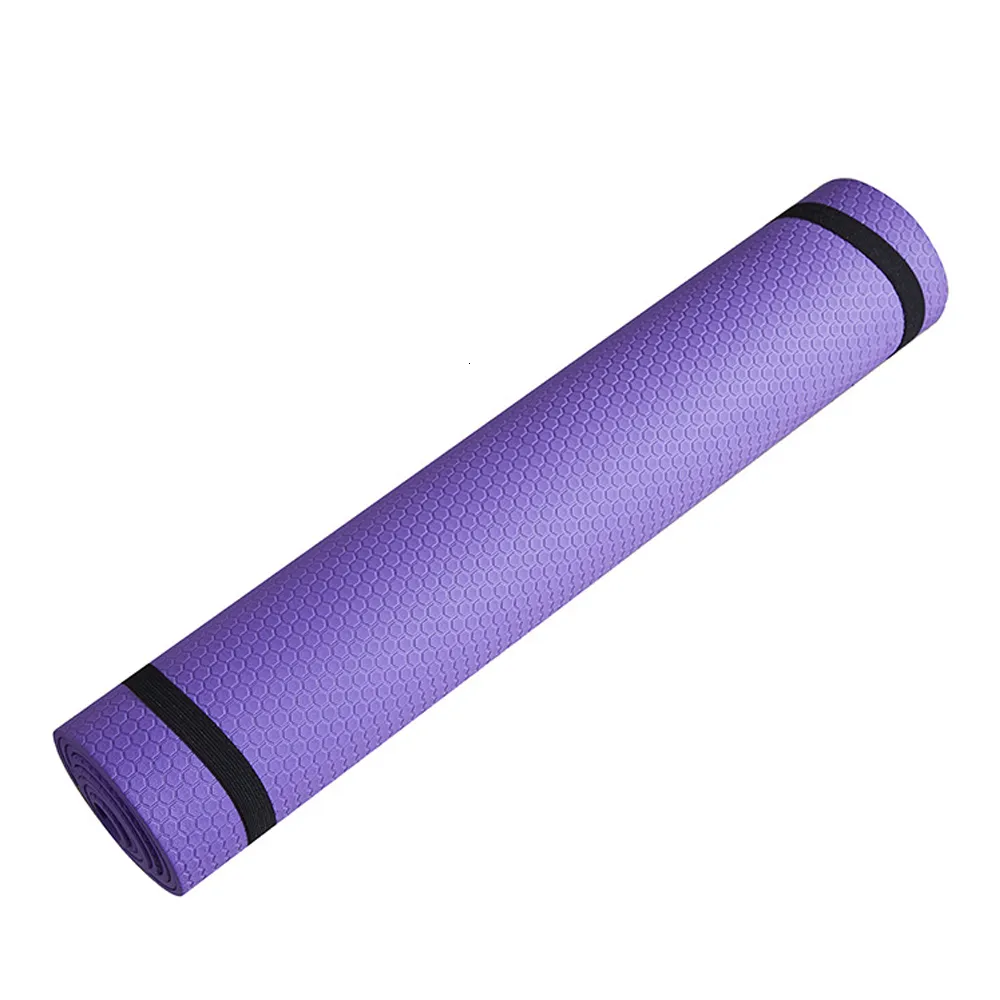How long should a yoga mat last? Yoga is a popular form of exercise and relaxation that has been practiced for centuries. A yoga mat is an essential tool for anyone practicing yoga, providing cushioning and support for various poses and stretches. However, like any fitness equipment, yoga mats can wear out over time. In this article, we will explore the factors that affect the lifespan of a yoga mat and discuss how long a yoga mat should last.

Factors Affecting Yoga Mat Lifespan
Several factors can affect the lifespan of a yoga mat. These include the material of the mat, the frequency of use, the type of yoga practiced, and how well the mats is maintained.
Material:
Yoga mats come in a variety of materials, including rubber, PVC, TPE, and natural fibers such as cotton and jute. Each material has its own durability and can withstand different levels of wear and tear. For example, PVC mats are known for their durability and can last longer than natural fiber mats.
Frequency of use:
The more frequently a yoga mat is used, the faster it will wear out. Daily use, especially for rigorous forms of yoga, can cause the mat to degrade more quickly.
Type of yoga practiced:
Certain types of yoga, such as hot yoga or power yoga, may cause more sweat and friction on the mat, leading to faster deterioration.
Maintenance:
Proper care and maintenance can extend the life of a yoga mats. Regular cleaning and storage in a dry, cool place can prevent the growth of bacteria and mold, which can cause the mat to deteriorate.
How Long Should a Yoga Mat Last?
The lifespan of a yoga mats can vary depending on the factors mentioned above. A high-quality yoga mat that is used a few times per week and well-maintained can last anywhere from one to five years. However, a lower-quality mat that is used daily may only last a year or less. Ultimately, the lifespan of a yoga mat depends on how well it is cared for and the quality of the material.
Replacing a Yoga Mat
As a general rule of thumb, a yoga mat should be replaced when it shows signs of wear and tear, such as peeling, flaking, or losing its grip. A mat that has become too thin or compressed to provide adequate cushioning should also be replaced. It is important to listen to your body and pay attention to any discomfort or instability during your practice, as this may indicate that your mat needs to be replaced.

Choosing a Quality Yoga Mat
To ensure that your yoga mat lasts as long as possible, it is important to invest in a high-quality mat from the start. Look for mats made from durable, non-toxic materials that are easy to clean and maintain. Consider the type of yoga you practice and choose a mat that is suitable for your needs. While high-quality mats may come with a higher price tag, they are more likely to last longer and provide better support and stability during your practice.
How to clean a yoga mat
Yoga is a fantastic way to exercise and relax, and a yoga mats is an essential tool for any practitioner. Over time, however, your mat can become dirty and smelly from sweat, dirt, and bacteria. Regular cleaning is essential for maintaining your mat’s integrity and prolonging its lifespan.
Why Clean Your Yoga Mat?
It’s not just about aesthetics – there are several important reasons why you should keep your yoga mat clean. First and foremost, cleaning your mats removes dirt, sweat, and bacteria that can build up over time. This is particularly important for hot yoga practitioners, as the heat and moisture create a perfect breeding ground for germs. Additionally, regular cleaning can help prevent the development of odors and make your practice more pleasant. Finally, cleaning your mats can help protect its surface and maintain its traction, ensuring that you can practice safely and comfortably.
Regular Maintenance
The best way to keep your yoga mats clean is to practice regular maintenance. After each session, take a few minutes to wipe down your mat with a clean, damp cloth to remove any sweat or dirt. If you notice any particularly stubborn stains or spots, you can use a gentle, non-abrasive cleaner to spot clean these areas. This simple routine can go a long way in preventing the buildup of dirt and grime on your mat.
Deep Cleaning
In addition to regular maintenance, it’s important to deep clean your yoga mats on a regular basis. How often you need to deep clean your mat will depend on how frequently you use it and the type of yoga you practice. As a general rule of thumb, aim to deep clean your mats at least once a month, or more often if you practice hot yoga. There are several different methods for deep cleaning your yoga mat, so you can choose the one that works best for you.

Soap and Water
One of the easiest and most effective ways to clean your yoga mats is with a simple mixture of soap and water. To do this, start by filling a large bowl or tub with warm water and adding a small amount of mild detergent. Submerge your mat in the soapy water and use a soft cloth or sponge to gently scrub the surface. Pay special attention to any areas that are particularly dirty or stained. Once you’ve cleaned the entire mat, rinse it thoroughly with clean water to remove any soap residue. To dry, lay the mat flat on a towel and roll it up, gently pressing to remove excess water. Finally, unroll the mat and hang it to air dry completely before using it again.
Machine Wash
If your yoga mat is machine washable, this can be a convenient and effective cleaning method. Check the manufacturer’s instructions to determine if your mat can be machine washed, and if so, set your machine to a gentle cycle with cold water. Use a small amount of mild detergent and wash your mats by itself to avoid any damage from zippers or buttons on other items. Once the cycle is complete, hang your mats to air dry or lay it flat on a towel.
Tips for Keeping Your Mat Fresh
In addition to regular cleaning, there are a few simple tips you can follow to keep your yoga mats fresh and hygienic:
- Always allow your mat to air out and dry completely after cleaning or use to prevent the growth of mold and bacteria.
- Avoid using harsh chemicals or abrasive cleaning tools, as these can damage the surface of your mat.
- Consider using a yoga towel or mat cover to absorb sweat and protect your mat during practice.
- Store your mats in a clean, dry area away from direct sunlight, as excessive heat and humidity can cause deterioration.

Conclusion
A yoga mat is an essential tool for anyone practicing yoga. Providing comfort and support during poses and stretches. The lifespan of a yoga mats can vary depending on factors such as the material. Frequency of use, type of yoga practiced, and maintenance. With proper care and maintenance, a high-quality yoga mat can last anywhere from one to five years. It is important to replace a yoga mats when it shows signs of wear and tear. And to invest in a quality mats that meets your needs. By choosing a durable mat and taking care of it. You can enjoy a safe and comfortable yoga practice for years to come.
